James Mott takes a look at how to fine-tune your rifle and scope setup and carry out basic maintenance procedures to get the best from your chosen kit.
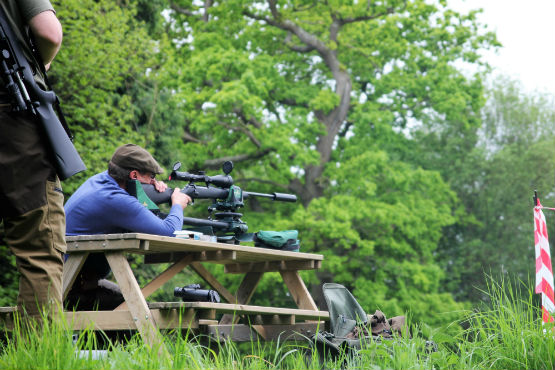
Setting up the combination of rifle and optics properly for the individual hunter is crucial in order to be able to achieve reliable, accurate and consistent results in your shooting. Shooting live quarry means you cannot afford to make errors with ill fitting, inaccurate kit. Knowing your rifle is setup accurately, is vital to ensure ethical, accurate kill shots and brings confidence to the user. Time spent paying attention to your most important piece of stalking kit will pay dividends in the field.

The Rifle
Free floating barrel
Majority of hunting rifles feature free floating barrels – that is to say that the barrel does not in any way touch the stock’s forend. Even the slightest touch will cause inaccuracies.
Action to stock fitting
With the barrelled action removed from the stock, check the bedding, screws and component parts. If you barrel is removable and attached to the action by screws make sure the screws are torqued correctly. Clean thoroughly and reassemble making sure the action screws are firmly seated using a tool with the correct torque setting
Trigger pressure
There is no doubt that a lighter trigger will aid accuracy; however, a heavier trigger is much safer in the field, particularly when taking a shot in the winter months with frozen fingers! Cold hands or wearing gloves will change the feel of the trigger, which in turn could lead to the gun going off before you are ready. It is possible to adjust most triggers to around 2 lbs which is a happy compromise. If you own two or more rifles it is also advisable to set each trigger at the same pressure which will aid consistency in your shooting.
Comb height
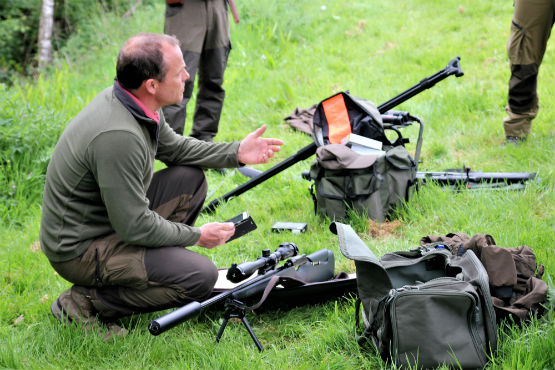
(For more information about CDS firearms training follow this link: firearms-training)
The standard height of a rifle stock ‘comb’ is not ideal and even modern-day rifles are designed around the use of open sights. Whilst some people find that the fit between comb, cheek and optic works ok for them, others struggle to get their eye aligned with the centre of the scope and a positive cheek weld to the stock. If your rifle has an adjustable stock (not many do) this should be adjusted so that when you place your cheek onto the stock your eye is looking through the centre of the optic. The alternative is to purchase a comb raising kit which are quick and straightforward to fit.
Ammunition
Make sure you are using the best ammunition for your gun. Whilst there are many different types of bullet design offering different results, the best cartridge in my opinion is the one that produces consistently tight groups. If you are going to use factory ammunition, test as many rounds as you need to find a bullet that your rifle favours. Assuming you are an accurate marksman, it should be possible to find one that groups in under 20mm. Hand loading ammunition is the other option, and this can produce groups of 15mm or less.
The Scope
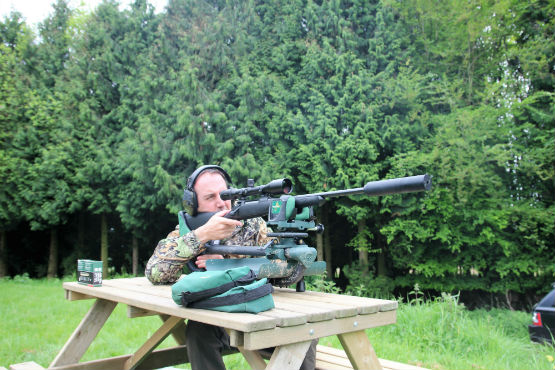
Base and Rings
Choosing the right good quality bases and rings pays dividends in the long run. The aim is to have the scope securely mounted as low to the barrel/bore as possible which means that there will be less effect on the outcome of your shot if the rifle is slightly canted when taking a shot.
Bases
These should be designed for the brand/model of rifle you are using and the screw fittings correctly torqued. This is most important as it is quite easy to strip the treads on the rifle action which will create a serious problem. It is also a good idea to fix the screws using Loctite thread locker to avoid any possible movement. With the heavy recoil of a centre fire calibre these are the screws that are most likely to work loose, and the process of removing the optic to check them will mean re-zeroing your rifle.
Rings
The bottom half of the rings should be pushed forward so that the recoil tabs on the ring bases are fully in contact with the grooves machined in the rail. This will prevent movement from the inertia created when firing. The rings should then be checked to make sure there is no misalignment between the front and rear rings and adjusted as required to get them in a straight line. With the scope in place, the top part of the ring should be evenly screwed down, firmly enough to stop the optic moving. As always, torque to the manufactures settings. This is especially important as overtightening can damage the scope body and affect its performance and accuracy.
Scope Positioning
The scope needs to be positioned so that when you place your head on the stock in a natural position you get a clear sight picture immediately without the need to move your head backward or crane your neck forward to get a sight picture. To test whether your scope is positioned correctly, turn up the magnification to full power (the higher the magnification, the smaller the exit pupil and the harder it is to get a clear sight picture), close your eyes, shoulder the rifle and move your head into position. Upon opening your eyes, you should see a clear sight picture. If you cannot, the scope needs to be moved either forward or backward to achieve this.
Scope levelling
The optic needs to be set level and true with the rifle’s receiver so the scope's windage and elevation adjustments will accurately track horizontally and vertically on target. Levelling a scope (and its reticle) to the gun is not the same as levelling the rifle during shooting. The latter action is critical for long-range shooting precision but can only be done with a riflescope that is properly mounted and levelled to the gun. Remember we are not levelling the optic to the eye, but rather to the rifle's receiver.
Basic Maintenance
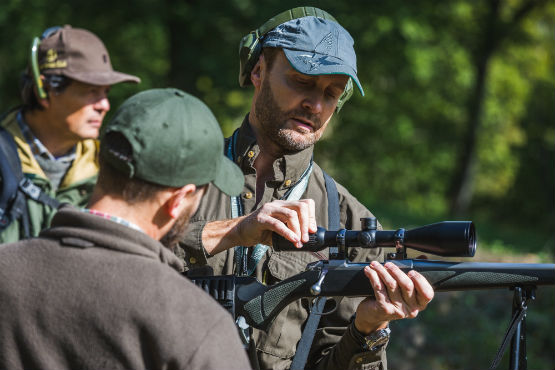
A rifle is a precision instrument and really do need to be kept clean if you expect them to work properly. A little effort will keep your guns safe, reliable and rust-free
- Do not put a rifle in a gun slip into a gun safe, as you need air movement around the rifle
- If a rifle gets wet or if it is used in a damp environment eg. in foggy conditions, always wipe down the gun, clean the sling swivels, bolt, action and inside the barrel and apply a light film of gun oil to metal parts to avoid corrosion. Note: always remove any oil in the barrel before firing as this will increase the pressure in the barrel and cause inaccuracies.
- Make sure your gun safe is not located in a damp environment. Fit a Napier VP90 patch inside the cabinet to help keep your guns free from moisture and any other corrosive elements.
- Always remove the moderator before storing your gun and put a small amount of gun grease on the rifles thread. If used in rain/damp environment, dry and spray lightly inside the can with WD40 or similar to dispel any moisture. Napier make a specialist product for this called Silentsave which will greatly prolong the life of your moderator.
- Clean the barrel using a boresnake every 10 shots or so to remove fouling and any moisture. After time your barrel will build up layers of carbon and copper and will need to be cleaned using a specialist chemical. How often is a good question? Every barrel is different but as a guide, chemical clean you barrel when you notice accuracy issues which for me is somewhere between 500 - 1000 rounds. Remember that if you clean your barrel too often, you can actually be doing more harm than good!
- Check all screw fixings and re-torque as required; the stock and forend, stock sling studs, scope bases/rail/rings and the action screws.
Setting up your rifle/optics properly, knowing your rifle(s) and practicing regularly and/or getting help from a professional will help you to become a more proficient marksman and effective deer stalker.
Remember to always check/re zero after making any adjustments to your rifle.
CDS Firearms training have excellent shooting facilities near Crawley, West Sussex just one hour from London. James Mott is our dedicated firearms trainer and carries an extensive tool kit enabling us to accurately set up, adjust and zero rifles using up to date specialist equipment.
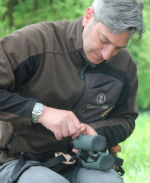 If you would like professional assistance setting up your rifle/scope or would like to book a zero/training session to improve your marksmanship, please contact James Mott on 01403 790244 / 07894 146643.
If you would like professional assistance setting up your rifle/scope or would like to book a zero/training session to improve your marksmanship, please contact James Mott on 01403 790244 / 07894 146643.
For more information about CDS firearms training follow this link: firearms-training



















